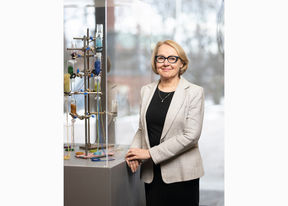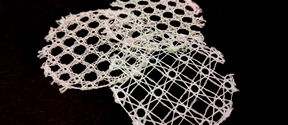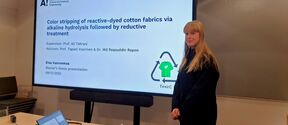Nature invented the circular economy — with aspirational engineering we can follow suit

Kristiina Kruus, Dean of the Aalto University School of Chemical Engineering:
"In my research career I’ve focused on how enzymes and microbes break down biomass. Nature’s microbes can decompose plant-based biomass, like wood, into sugars, which pass up the food chain into animals. In this magnificent circular economy, everything is utilised and there is no waste, unlike in many industrial processes. Aspirational engineering is a new way of thinking that seeks to emulate nature’s rational use of resources.
I’m completely convinced that technological development will find solutions for the climate crisis, the loss of biodiversity and the shortage of raw materials. This massive transition is already underway: electric vehicles are taking over, single-use consumption is decreasing, and we are learning to make sustainable choices.
I am particularly encouraged that chemical engineering, which has been seen as a polluting promoter of heavy industry, is now attractive to young people at the same time as the field strives for clean solutions. We are educating the students who will make and apply the aspirational engineering of the future. An example is green hydrogen, which can be produced with Finnish wind energy and used to make, for instance, fertilisers and chemicals, free of emissions.
As a bioengineer, it is amazing to see how renewable biomaterials are now replacing fossil-based packaging like plastic. In addition to replacement, recycling of materials like textiles, fibres and metals is another important way to protect nature. But single-use consumption needs to be cut back, because stopping waste from being created in the first place is the most effective action. Technology can play a role here too, because with judicious and systematic use of raw materials and longer-lasting products, we can reduce waste and promote recycling.
The green transition is happening, and I am convinced that, with the help of technology, we can reach carbon-neutrality by 2035, Finland’s goal year."
This story first appeared in the Aalto University Magazine issue 32, which was published in April 2023. The digital version can be read on the issuu.com website.
Read more news

Learning Centre opening hours during Christmas and year-end holidays
Thank you for the past year and have a wonderful holiday season!
Smart textiles are reshaping our understanding of materials – and interspecies communication
The PAST-A-BOT research project, funded by the European Research Council (ERC), is developing soft, intelligent textiles that could one day function as rescue robots, sound-sensing agricultural fabrics, or assistive clothing. At the same time, the project aims to rethink the way we approach materials research.
Master’s student showcases efficient color stripping of cotton fabrics
On December 9, master’s thesis student Elsa Vuorenmaa from the Textile Chemistry Group presented the results of her research on color stripping of reactive-dyed cotton fabrics.






